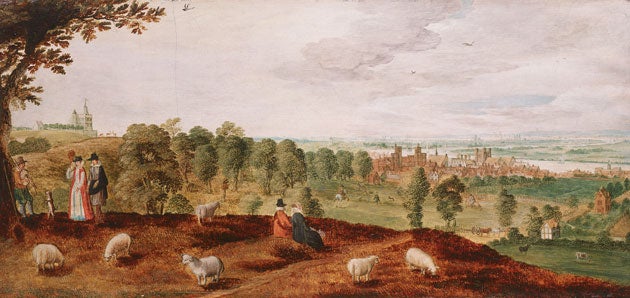New Tudor find could block Olympic event
Rains uncover brickwork which allows Greenwich campaigners to claim 'Queen Elizabeth stood here'

A coalition of residents and celebrities determined to stop the 2012 Olympic Games equestrian events being held in Greenwich's royal park have received a much-needed boost to their campaign: archaeologists have unearthed what are thought to be Tudor remains, just yards from the planned site of the events.
The group No to Greenwich Equestrian Events (Nogoe), which has the backing of high-profile supporters including the historian David Starkey, is now considering legal action in an attempt to reverse Greenwich council's decision last week to grant permission for the events.
The discovery will add weight to claims that the games threaten the park's archaeological sites and ancient trees, one of which is more than 1,000 years old. These fears were voiced by Dr Starkey in a letter to a national newspaper last week in which he claimed: "Greenwich faces its gravest threat since the 19th century."
Dermott Glynn, Nogoe's coordinator, said: "We've got a meeting on 10 April when we'll decide what to do. One option is to ask for a judicial review on the basis that the council hasn't understood the information it was presented with."
Archaeologists say unusually heavy rain uncovered historic brickwork in the park – ruins which may be the remains of a viewing platform used by Queen Elizabeth I and her courtiers. The queen was born in nearby Greenwich Palace.
In his letter, Dr Starkey emphasised the historical and architectural importance of the park, which is a World Heritage Site, and warned that the legacy of the games was likely to be "irreparable damage and the long-term scarring of the landscape."
Terry Smith, a specialist on historic building materials, said the brickwork was "more likely to be Tudor than anything else".
Archaeologists claim not enough is being done to protect the 79 known historic sites in the park. Harvey Sheldon, the chairman of the London and Middlesex Archaeological Society, who discovered a Roman temple in the park in 1979, said: "The route of the equestrian cross-country event passes very close to the site of the temple, but we're more concerned that the heavy footfall of 50,000 spectators will do untold damage to remains, which in many cases are close to the surface."
Last December, the Roman site and an Anglo-Saxon burial site were scheduled as ancient monuments by English Heritage, whose inspector of ancient monuments, Jane Sidell, said the route for the equestrian events had been carefully agreed with the Olympic organisers to avoid any historically sensitive areas. "I'm satisfied that the archaeology will be safe – geo-textile membranes will cover the sensitive areas. But that was before the new site was found."
The author Blake Morrison, a Nogoe supporter, spoke out against the plans this weekend: "The Olympic organisers have given assurances that Greenwich Park will be returned to its original state. But I'm yet to be convinced. And there will be no legacy. It all seems like an excuse for television cameras to provide a heritage shot or two."
However, a London Organising Committee of the Olympic Games spokeswoman denied that the brickwork was significant. She said: "It is complete speculation to suggest that Tudor remains have been discovered on the park."
Join our commenting forum
Join thought-provoking conversations, follow other Independent readers and see their replies
Comments
Bookmark popover
Removed from bookmarks